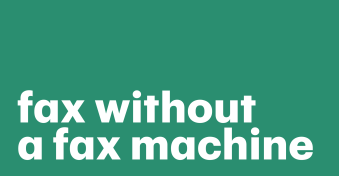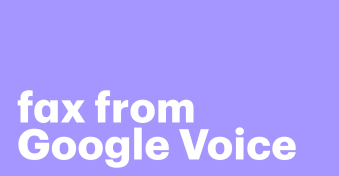GDPR standards have mandated organizations to manage personal data more securely.
While many businesses may not be up to speed with these requirements, it doesn’t cancel the fact that they exist.
More importantly, if your faxing software doesn’t abide by the GDPR compliance standards, your business may be guilty of breaking data privacy laws.
As a consequence, you could face severe penalties.
In this article, we’ll discuss how to send and receive GDPR-compliant fax.
Find out why you need to abide by this compliance regulation.
What is online faxing?
Traditional fax machines are gradually being replaced by online faxing solutions because the latter allows you to send files via the Internet using regular email or fax numbers.
Online faxing is more secure than email messaging because only authorized users with access to the email address can get the documents you send.
Before we continue, let’s understand what GDPR means.
What is GDPR?
The General Data Protection Regulation (GDPR) is an EU directive on how companies should manage personal data.
This 88-page regulation informs organizations about maintaining data privacy when dealing with client information.
Since GDPR was rolled out in May 2018, privacy regulations have become more strict with respect to business operations.
Consequently, consumers now have more control over how their data is collected, transmitted, and processed.
Thanks to GDPR, companies must put measures in place to protect personally identifiable information at all costs.
As long as you work with clients or customers within the EU trade and economic zone, any medium you use for sending and receiving data must be GDPR-compliant.
What is the relationship between GDPR and online fax?
To remain compliant with GDPR, you must understand how the rules affect online faxing. Let’s explore how GDPR and online fax are intertwined.
Management of personal data
GDPR protects all kinds of personal information, including biometric data, health, and genetic data, IP addresses, cookie data, racial or ethnic data, political opinions, sexual orientation, etc.
The new rules indicate that personal data must be protected according to EU standards.
Any medium used for handling data must be secure from breach or mismanagement.
Unfortunately, traditional fax machines cannot meet this requirement because faxes are usually sent to a central fax machine rather than an authorized individual.
When this occurs, the fax is neither logged nor encrypted.
Data requests
GDPR laws insist that people can request to know how an organization uses their data.
If your fax archive is stored in hard copy format, responding immediately to data requests like these becomes harder.
Online faxing tools use Optical Character Recognition (OCR) to make text within images readable and searchable, which makes them easier to send and store digitally.
That way, people can access their personal data upon request, and you’ll fully comply with the GDPR.
File transmission
GDPR requires that personal data should only be in the custody of authorized personnel within any organization.
Therefore, organizations must apply tools and access controls to bolster data privacy when transmitting files.
However, traditional fax machines send and receive data that anyone can read on the receiving end, which doesn’t offer the level of privacy and protection required by the GDPR.
That’s why online faxing is a better option.
Digital fax services surmount this challenge by helping you only transmit faxes to authorized personnel.
You will rest assured that all faxes are sent and received via approved servers to maintain security and privacy before and after transmission.
Why should your faxing solutions be GDPR-compliant?
Before using any faxing solution, you must ensure it meets the updated GDPR standards. Here are some reasons why.
To create a central repository
New GDPR rules suggest that organizations have a central repository for all business documents.
Therefore, you need a fax solution that automates the sharing and storage of business documents.
A GDPR fax solution can integrate directly with document management systems like Microsoft SharePoint and Dropbox.
This central repository handles all data archiving and makes managing faxes more efficient.
To avoid delayed response times
GDPR requirements allow consumers to request the information companies hold about them.
In this case, owning GDPR-compliant fax software will help you deliver a quick response.
Apart from that, GDPR-compliant faxing solutions use the OCR feature to make all faxes searchable.
With this feature, you can retrieve information from multi-page documents through a quick search.
To nullify human error
A GDPR-compliant fax service will record the precise timestamp of the delivery receipt for future use.
It also offers centralized logging and reporting tools that allow you to monitor the when, who, and what of the faxing process.
Such valuable insights promote accuracy in all incoming and outbound fax traffic around the office.
To avoid penalties
The new GDPR rules are stricter, allowing authorities to regulate and penalize non-compliant firms.
If you’re found guilty of a violation or data breach, you can be fined up to 4% of annual global revenue or €20 million.
Other data privacy best practices when faxing
Here are some valuable tips to follow when providing digital faxing services.
Switch to “opt-in” mode
GDPR compliance means that companies must abide by affirmative consent.
Instead of automatically opting users into your system, you must obtain express permission before collecting, storing, and processing their data.
This new approach applies to adding a customer’s email address to an email list or collecting cookies about them when they visit your app or platform.
Use a compliant cloud storage provider
Most organizations assume that since their faxing solutions use a cloud-based storage provider like Microsoft Azure or Google Cloud, they must be GDPR-compliant.
But that’s not always the case.
To ensure GDPR compliance, both the cloud provider and faxing software must follow the rules.
That’s why it’s in your interest to hire or consult with a data protection officer who understands how these things work.
Conclusion
Organizations that collect and process personally identifiable information must protect user data according to GDPR laws.
Using a GDPR-compliant fax solution is the first step toward ensuring all consumer data receive the highest form of data protection.
These laws might appear frustrating, but they are designed to make users more confident in divulging their personal data.
To ensure your faxing provider meets the standards, work with a data protection officer, as their expertise can set you on the right track.
Fortunately, digital services like PandaDoc allow you to share sensitive data securely without putting your privacy at risk.
If your company still uses analog faxes to share personal data, you should consider opting for digital solutions right away.
Disclaimer
PandaDoc is not a law firm, or a substitute for an attorney or law firm. This page is not intended to and does not provide legal advice. Should you have legal questions on the validity of e-signatures or digital signatures and the enforceability thereof, please consult with an attorney or law firm. Use of PandaDocs services are governed by our Terms of Use and Privacy Policy.


